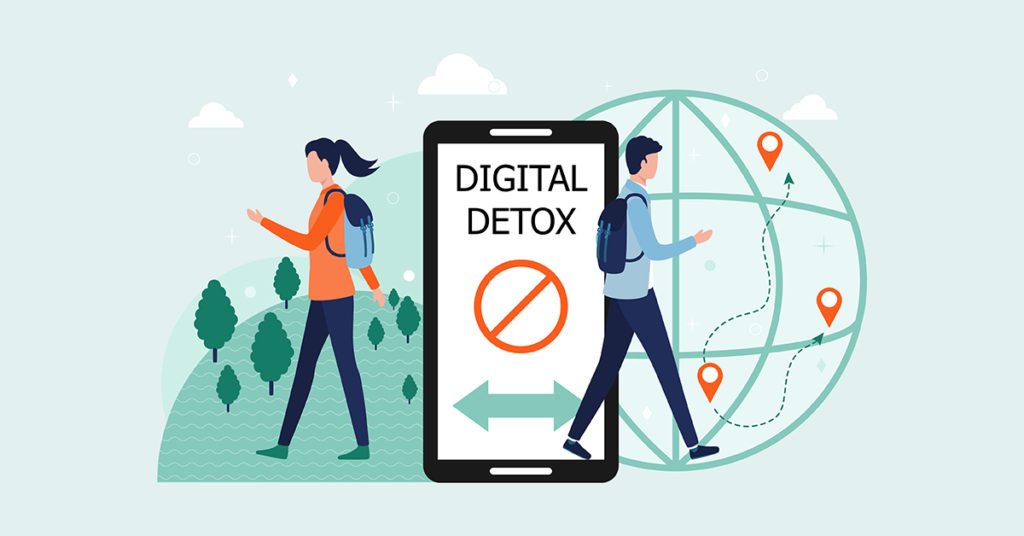In today’s hyper-connected digital world, taking a break from technology has become essential for our mental, emotional, and physical well-being. A digital detox involves consciously disconnecting from digital devices and platforms to create space for reconnecting with the real world. This article explores the concept of a digital detox, its benefits, and provides practical tips for unplugging and finding balance in our digital lives.

1. Recognizing the Need for a Digital Detox:
Recognize the signs that indicate the need for a digital detox. These signs may include excessive screen time, difficulty focusing, decreased productivity, sleep disturbances, increased stress, and a sense of being constantly connected. Being mindful of these signs can help you realize when it’s time to take a step back and prioritize your well-being.
2. Set Clear Goals and Boundaries:
Define your goals for the digital detox. Establish clear boundaries by deciding how long you will detox, which devices or platforms you will disconnect from, and the rules you will follow during the detox period. Communicate your intentions with family, friends, and colleagues to set expectations and ensure support.
3. Create a Supportive Environment:
Prepare your physical environment to support the digital detox. Remove digital distractions from your immediate surroundings. Consider keeping devices out of sight or in a designated area during the detox period. Set up alternative activities, such as books, art supplies, or outdoor equipment, to engage in during your detox.
4. Plan Offline Activities:
Make a list of offline activities that bring you joy, relaxation, and fulfillment. Engage in hobbies, spend time in nature, exercise, read books, have face-to-face conversations, or practice mindfulness and meditation. Plan activities that promote connection, creativity, and self-care, allowing you to fully immerse yourself in the present moment.
5. Establish Tech-Free Zones and Times:
Designate specific times and spaces as tech-free zones. This could include areas such as bedrooms, dining areas, or quiet spaces. Create device-free routines, such as turning off notifications or avoiding screens before bedtime. By establishing boundaries, you create opportunities for meaningful connections and uninterrupted moments of relaxation.
6. Practice Mindful Technology Use:
When you do return to using digital devices after your detox, practice mindful technology use. Be intentional about the time you spend online, the platforms you engage with, and the content you consume. Set time limits, avoid mindless scrolling, and prioritize activities that add value and enrich your life.
7. Reflect and Evaluate:
At the end of your digital detox, take time to reflect on your experience. Assess how you felt during the detox period, the positive changes you noticed, and the challenges you faced. Consider incorporating some of the lessons learned into your daily life, finding a healthier balance between your digital and offline activities.
Conclusion:
A digital detox offers a valuable opportunity to unplug from the digital world and reconnect with what truly matters. By setting clear goals and boundaries, creating a supportive environment, planning offline activities, establishing tech-free zones and times, practicing mindful technology use, and reflecting on your experience, you can find a healthier balance in your digital life. Embracing regular digital detoxes allows you to prioritize your well-being, foster meaningful connections, and fully engage in the present moment. Remember, a digital detox is not about completely abandoning technology, but rather about finding a healthy relationship with it and reclaiming control over your digital habits to live a more balanced and fulfilling life.